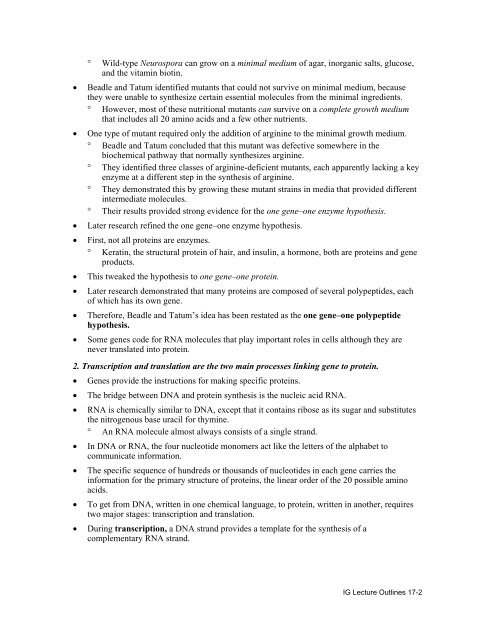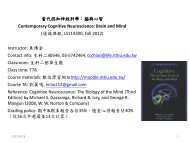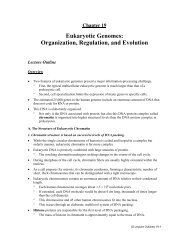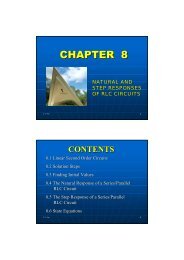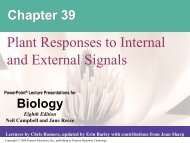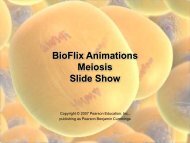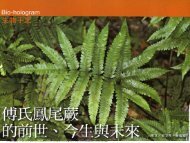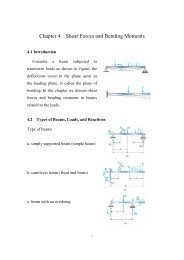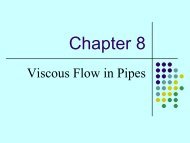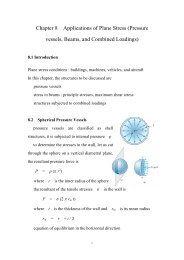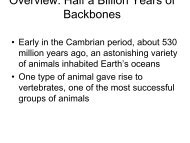CHAPTER 17 FROM GENE TO PROTEIN
CHAPTER 17 FROM GENE TO PROTEIN
CHAPTER 17 FROM GENE TO PROTEIN
- No tags were found...
Create successful ePaper yourself
Turn your PDF publications into a flip-book with our unique Google optimized e-Paper software.
° Wild-type Neurospora can grow on a minimal medium of agar, inorganic salts, glucose,and the vitamin biotin.• Beadle and Tatum identified mutants that could not survive on minimal medium, becausethey were unable to synthesize certain essential molecules from the minimal ingredients.° However, most of these nutritional mutants can survive on a complete growth mediumthat includes all 20 amino acids and a few other nutrients.• One type of mutant required only the addition of arginine to the minimal growth medium.° Beadle and Tatum concluded that this mutant was defective somewhere in thebiochemical pathway that normally synthesizes arginine.° They identified three classes of arginine-deficient mutants, each apparently lacking a keyenzyme at a different step in the synthesis of arginine.° They demonstrated this by growing these mutant strains in media that provided differentintermediate molecules.° Their results provided strong evidence for the one gene–one enzyme hypothesis.• Later research refined the one gene–one enzyme hypothesis.• First, not all proteins are enzymes.° Keratin, the structural protein of hair, and insulin, a hormone, both are proteins and geneproducts.• This tweaked the hypothesis to one gene–one protein.• Later research demonstrated that many proteins are composed of several polypeptides, eachof which has its own gene.• Therefore, Beadle and Tatum’s idea has been restated as the one gene–one polypeptidehypothesis.• Some genes code for RNA molecules that play important roles in cells although they arenever translated into protein.2. Transcription and translation are the two main processes linking gene to protein.• Genes provide the instructions for making specific proteins.• The bridge between DNA and protein synthesis is the nucleic acid RNA.• RNA is chemically similar to DNA, except that it contains ribose as its sugar and substitutesthe nitrogenous base uracil for thymine.° An RNA molecule almost always consists of a single strand.• In DNA or RNA, the four nucleotide monomers act like the letters of the alphabet tocommunicate information.• The specific sequence of hundreds or thousands of nucleotides in each gene carries theinformation for the primary structure of proteins, the linear order of the 20 possible aminoacids.• To get from DNA, written in one chemical language, to protein, written in another, requirestwo major stages: transcription and translation.• During transcription, a DNA strand provides a template for the synthesis of acomplementary RNA strand.IG Lecture Outlines <strong>17</strong>-2


